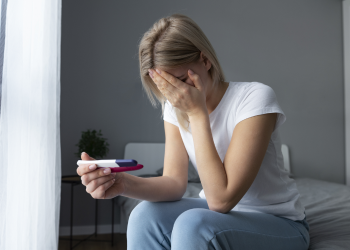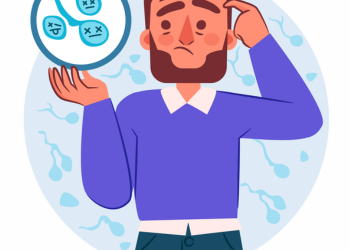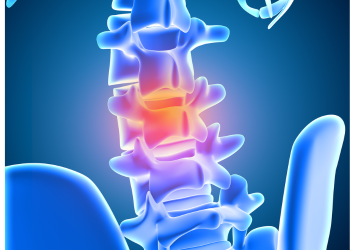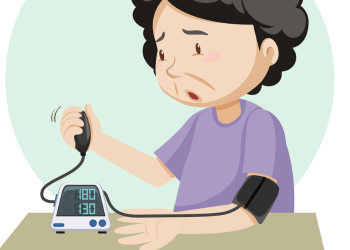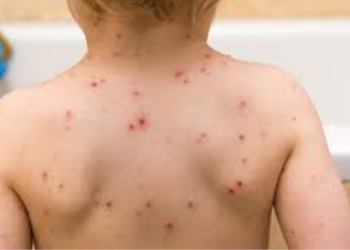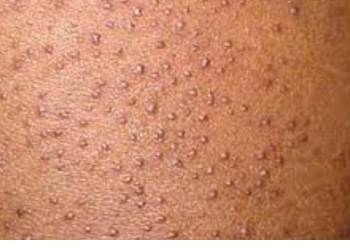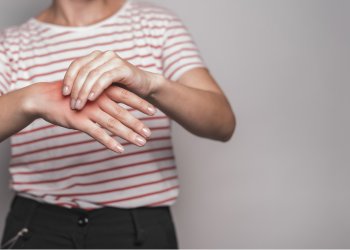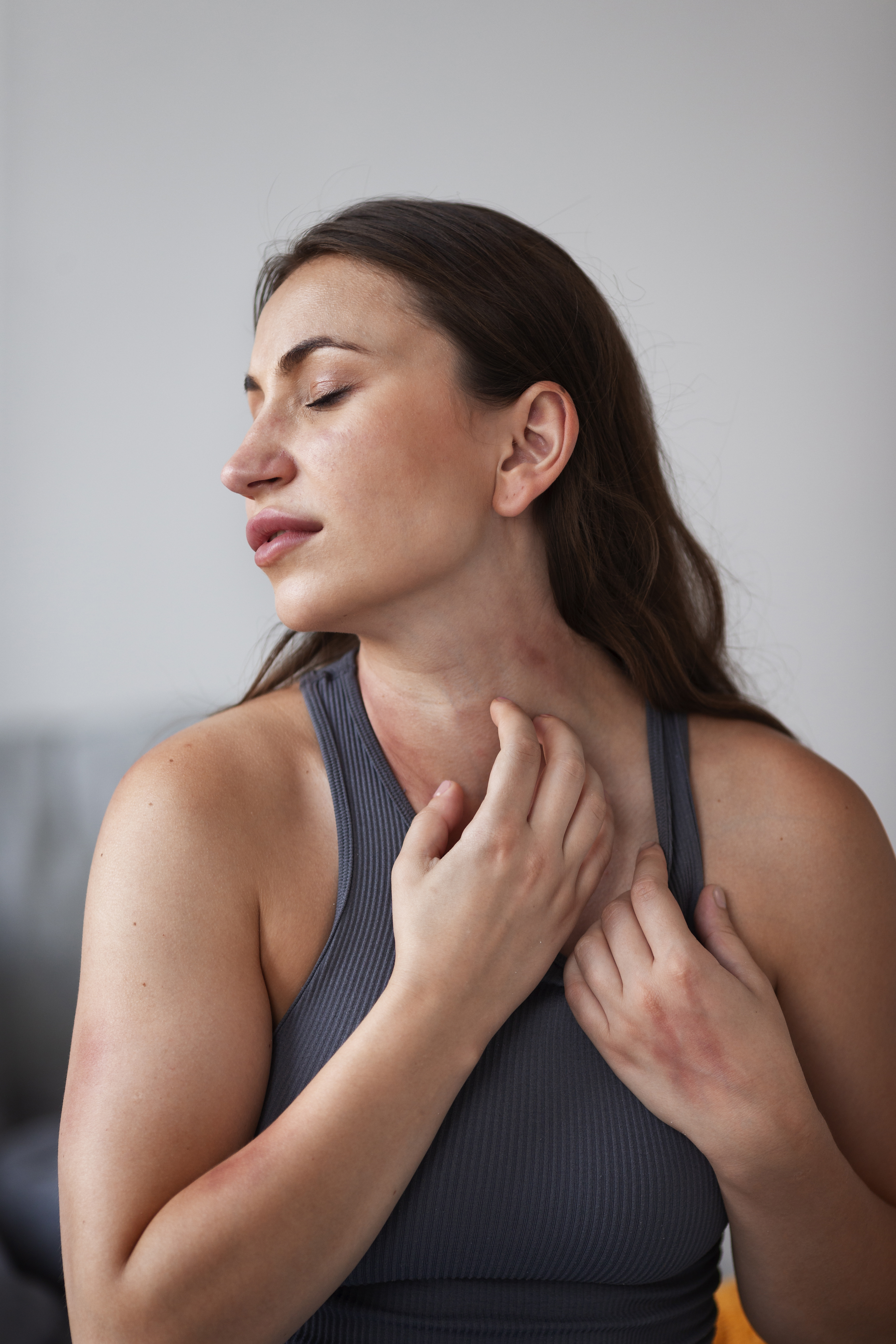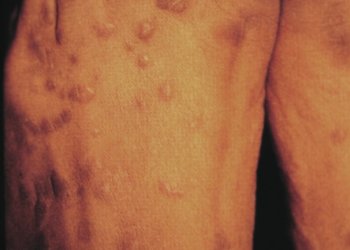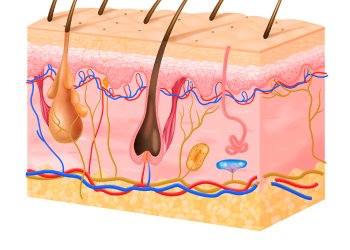
Folliculitis is a common skin
condition that happens when hair follicles become inflamed. It's often caused
by an infection with bacteria. At first, it may look like small pimples around
the tiny pockets from where each hair grows.
The condition can be itchy, sore,
and embarrassing. The infection can spread and turn into crusty sores. Left
untreated, severe infections can cause permanent hair loss and scarring.
Certain types of folliculitis are
known as hot tub rash and barber's itch. Homeopathy treats folliculitis by
mainly treating the causes, and chronicity is prevented by a symptom-similar
remedy that suits the person as a whole
Symptoms
Clusters
of small bumps or pimples around hair follicles
Pus-filled blisters that break open
and crust over
Itchy, burning skin
Painful, tender skin
Hot tub folliculitis
Hot tub folliculitis causes round, itchy bumps that may later develop
into small pus-filled blisters. The rash is likely to be worse in areas where
your swimsuit holds water against the skin.
A carbuncle is a cluster of painful, pus-filled bumps that form a
connected area of infection under the skin.
The two main types
of folliculitis are superficial and deep. The superficial type involves part of
the follicle, and the deep type involves the entire follicle and is usually
more severe.
Bacterial
folliculitis. This common type is a rash of itchy, pus-filled bumps. It occurs
when hair follicles become infected with bacteria, usually Staphylococcus
aureus.
Hot tub rash
(pseudomonas folliculitis). This type is a rash of round, itchy bumps
that can show up 1 to 2 days after exposure to the bacteria that causes it. Hot
tub folliculitis is caused by Pseudomonas bacteria, which can be found in hot
tubs, water slides, and heated pools in which the chlorine and pH levels aren't
correct.
Razor bumps
(pseudofolliculitis barbae). This rash can look like
folliculitis but it's caused by ingrown hairs, not infected follicles. It
mainly affects people with curly hair who shave too close and is most
noticeable on the face and neck. People who get bikini waxes may get razor
bumps in the groin area.
Pityrosporum folliculitis. This type is
a rash of itchy, pus-filled bumps, most often on the back and chest. It's
caused by a yeast infection.
Gram-negative
folliculitis. This type causes pus-filled bumps around the nose and mouth. It
sometimes develops in people who are receiving long-term antibiotic therapy for
acne.
Eosinophilic
folliculitis. This type causes intense itching and recurring patches of bumps
and pimples that form near hair follicles of the face and upper body. It mainly
affects people with HIV/AIDS.
Boils (furuncles)
and carbuncles. These occur when hair follicles become deeply infected with staph
bacteria. A boil tends to appear suddenly as a painful, inflamed bump. A
carbuncle is a cluster of boils.
Sycosis barbae. This type
affects people who shave.
Causes
Folliculitis is
often caused when hair follicles are infected with bacteria, commonly
Staphylococcus aureus (staph). It may also be caused by viruses, fungi,
parasites, medications or physical injury. Sometimes the cause isn't known.
Risk factors
Regularly wearing clothing that traps heat and
sweat, such as rubber gloves or high boots
Soaking in a hot tub, whirlpool, or public pool
that's not maintained well
Causing damage to hair follicles through shaving,
waxing, wearing tight clothes, or hair styling practices such as traction, wigs,
and oils
Using some medications
Having dermatitis or excessive sweating
(hyperhidrosis)
Having diabetes, HIV/AIDS , or another
condition that lowers your resistance to infections
Complications
Recurrent or spreading
infection
Permanent scarring
Patches of skin that are
darker (hyperpigmentation) or lighter (hypopigmentation) than before the
condition occurred, usually temporary
Destruction of hair
follicles and permanent hair loss
Prevention
Wash your skin regularly.
Do laundry regularly. Use
hot, soapy water to wash towels, washcloths, and any oil-soaked uniforms or
other clothing.
Avoid friction or pressure
on your skin. Protect skin that's prone to folliculitis from the friction
caused by backpacks, helmets, and tight clothes.
Dry out your rubber gloves
between uses. If you wear rubber gloves regularly, after each use, turn
them inside out, wash with soap, rinse, and dry well.
Avoid shaving, if
possible. For people with facial folliculitis, growing a beard may be a
good option if you don't need a clean-shaven face.
Shave with care.
Shaving less often
Washing your skin with
warm water and a mild facial cleanser (Cetaphil, CeraVe, others) before shaving
Using a washcloth or
cleansing pad in a gentle circular motion to raise embedded hairs before
shaving
Applying a good amount of
shaving lotion before shaving
Shaving in the direction
of hair growth
Avoiding shaving too close
by using an electric razor or a guarded blade and by not stretching the skin
Using a clean, sharp blade
and rinsing it with warm water after each stroke
Avoiding shaving the same
area more than twice
Applying moisturizing
lotion after you shave
Avoiding the sharing of
razors, towels, and washcloths
Try hair-removing products
(depilatories) or other methods of hair removal.
Use only clean hot tubs and heated pools.
Talk with your health care
provider.
Diagnosis
Your health care provider will
likely be able to tell whether you have folliculitis by looking at your skin
and asking about your medical history.
Scraping of the skin to
look for yeast under the microscope
Obtaining a swab for
culture to determine the cause of infection
Rarely, a skin biopsy is
done to rule out other conditions
Medications
Lotions, gels or pills to control bacterial
infection.
Creams, shampoos or pills to fight fungal
infections
Creams or pills to calm
inflammation
Other interventions
Minor surgery. If you have a large boil or
carbuncle, your health care provider may make a small cut in it to drain the
pus.
Laser hair removal. Your health care provider
may suggest laser hair removal as an option for pseudofolliculitis barbae
Apply a warm, moist washcloth. Do this several
times a day to relieve discomfort and help the area drain, if needed. Moisten
the washcloth with a vinegar solution made of 1 tablespoon of table white
vinegar in 1 pint of water.
Apply a soothing lotion or cream.
Clean the affected skin. Gently wash the
infected skin at least twice a day with an antibacterial soap or cleanser, such
as benzoyl peroxide. Use a clean washcloth and towel each time and don't share
your towels or washcloths. Use hot, soapy water to wash these items.
Protect the skin. If you shave, stop if you
can. Barber's itch usually clears up a few weeks after you stop shaving.
HOMOEOPATHIC MEDICINE
THUJA OCCIDENTALIS
GRAPHITES


